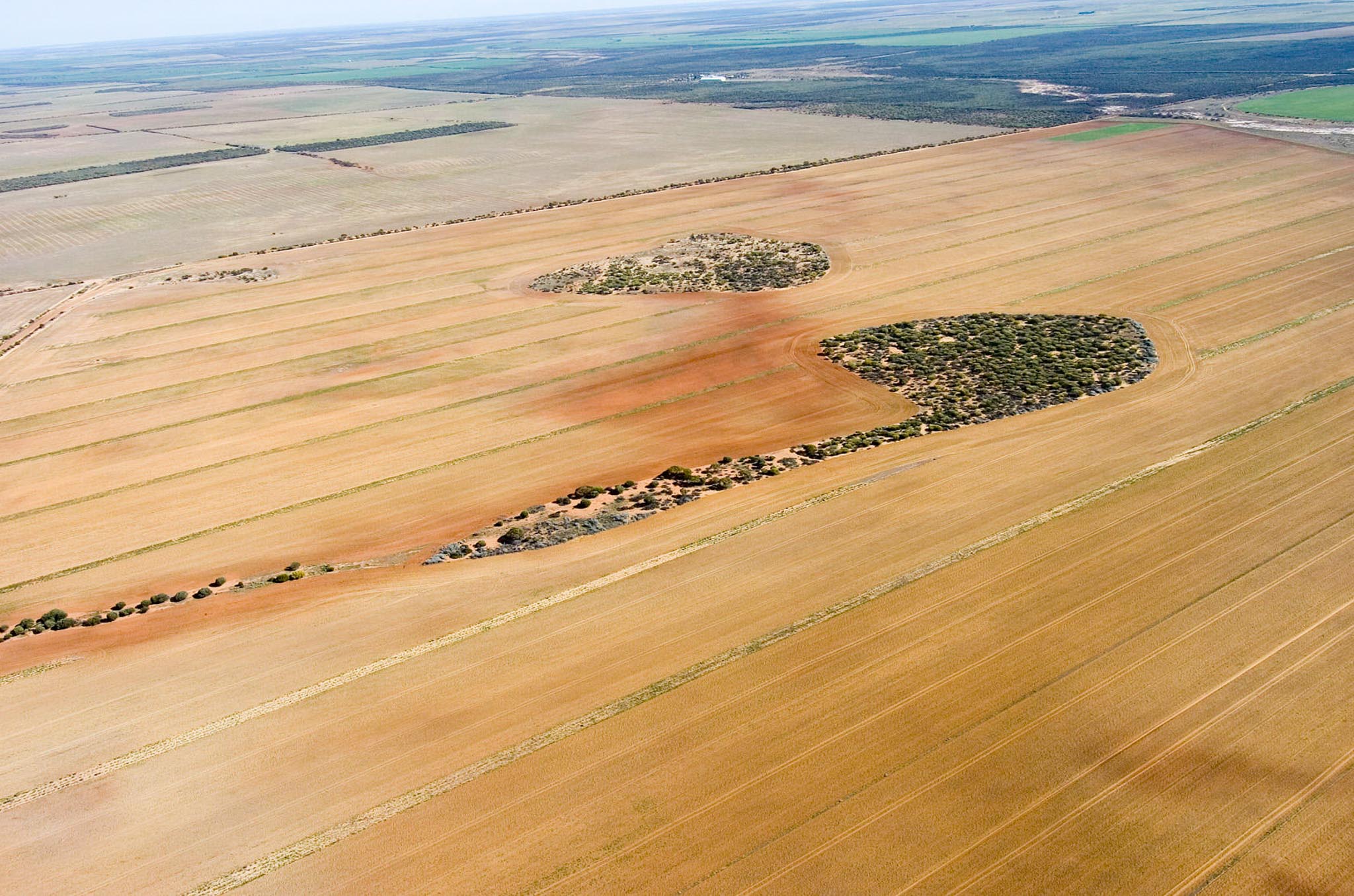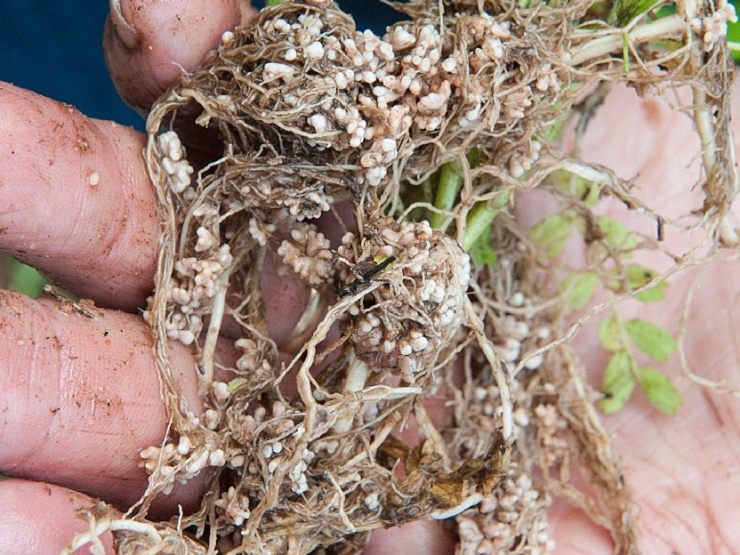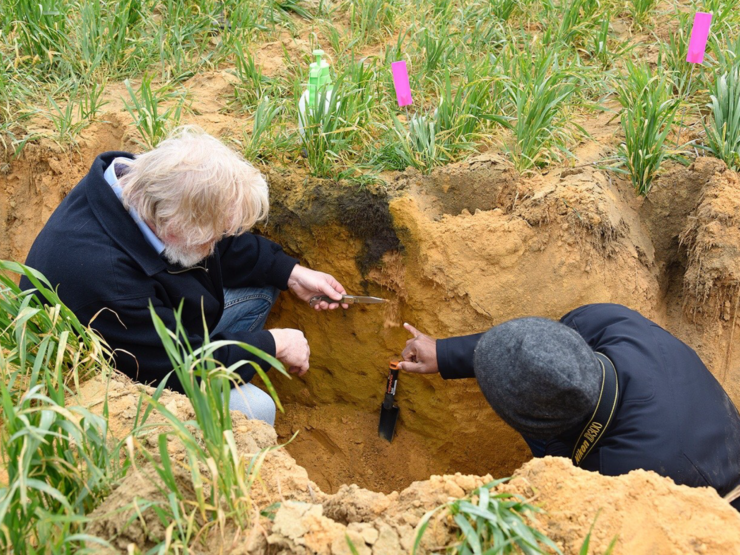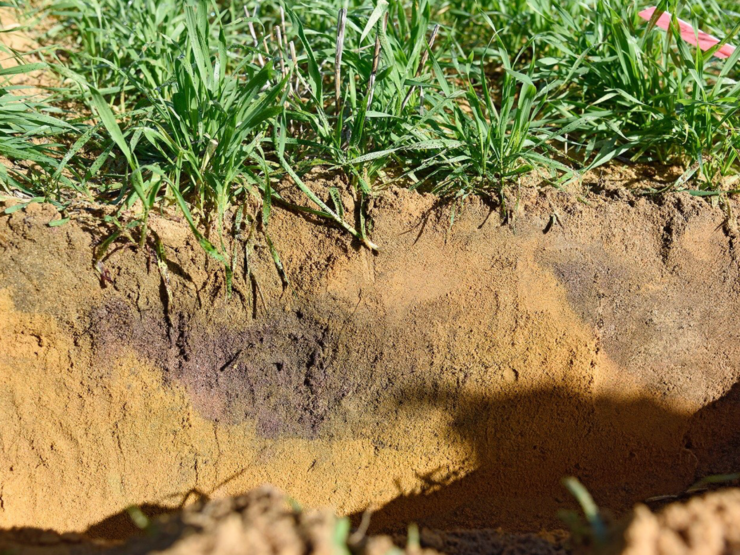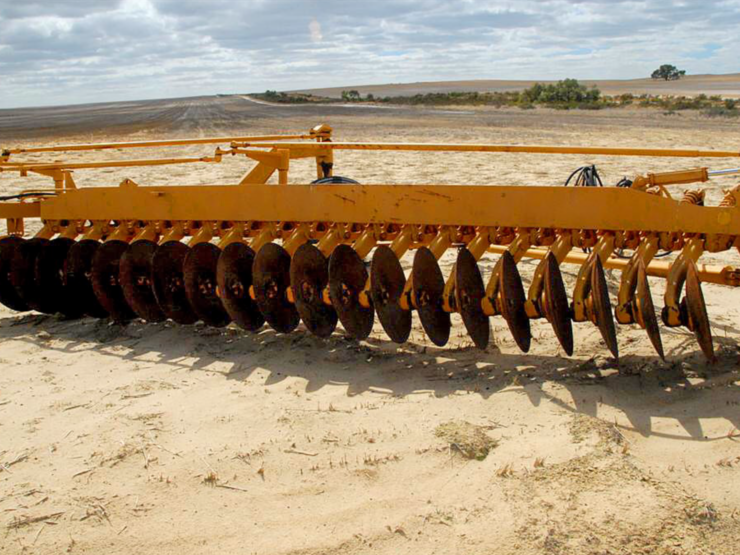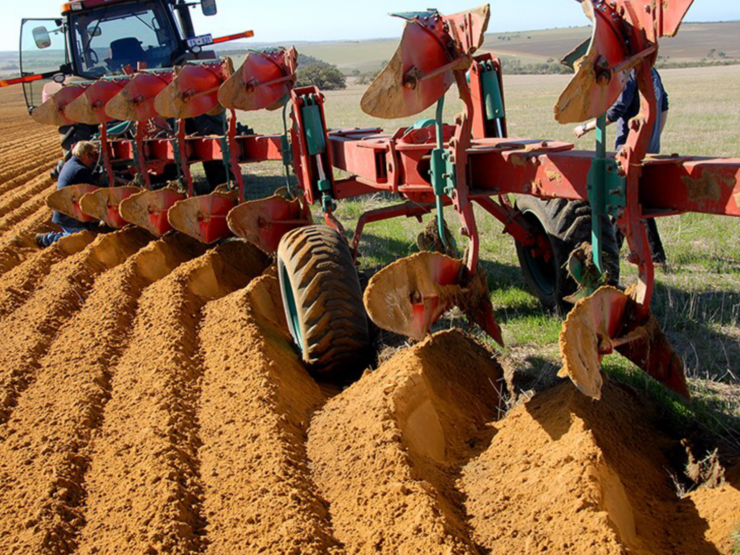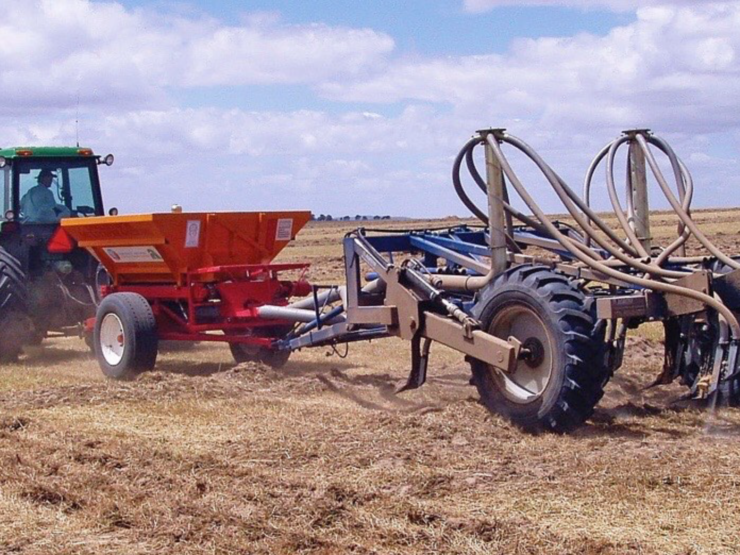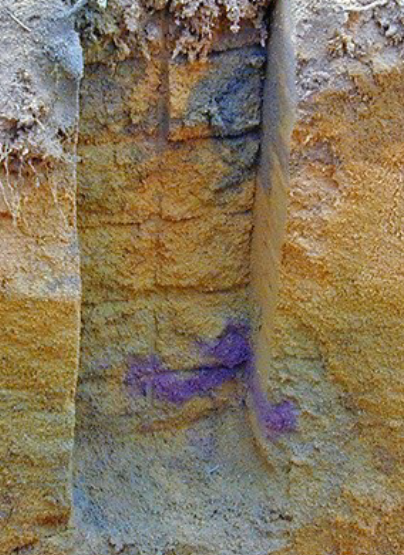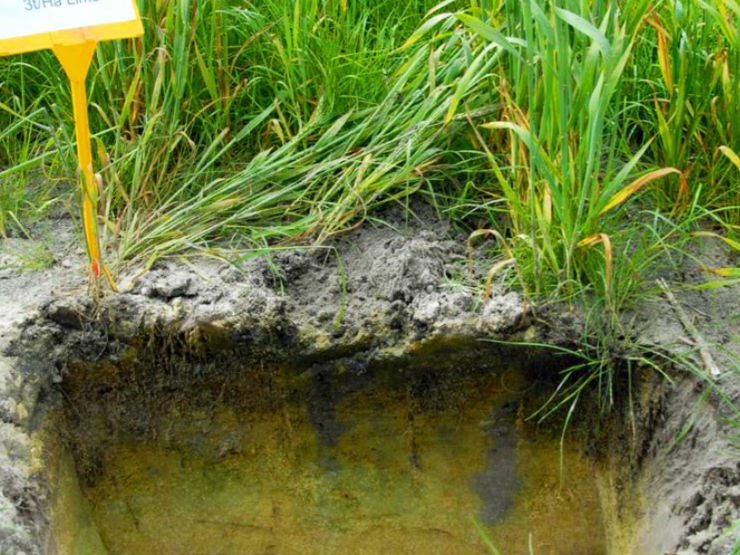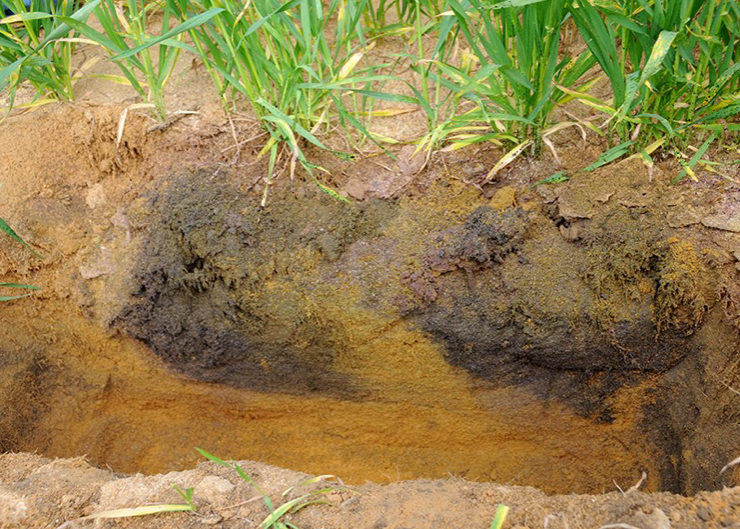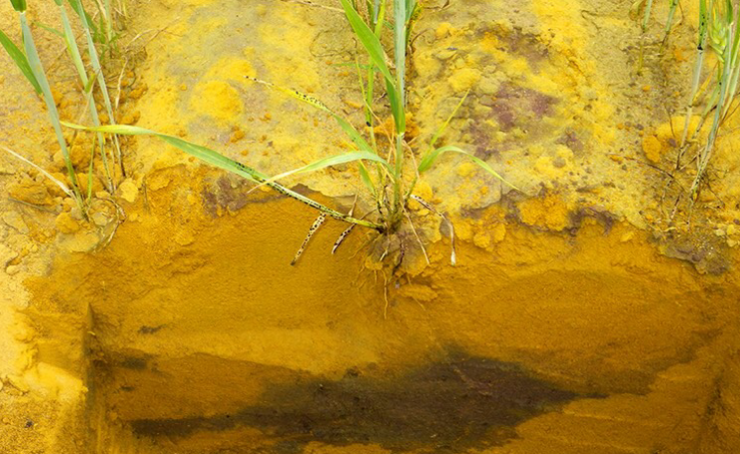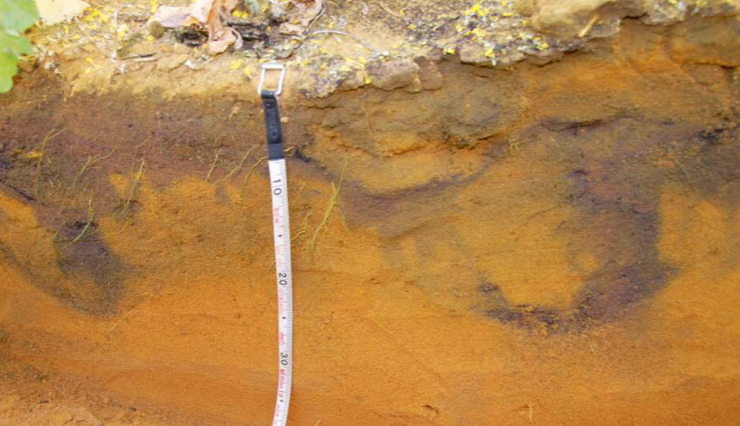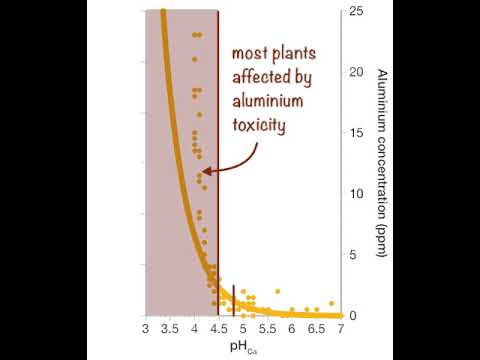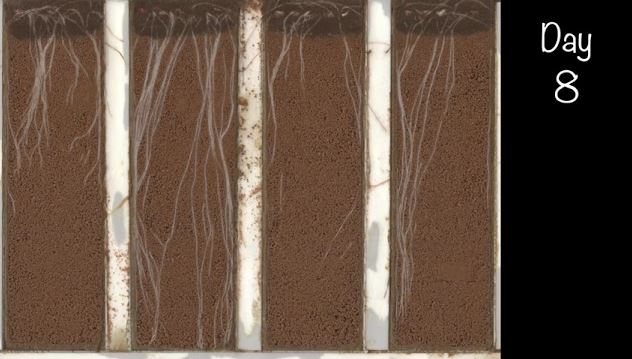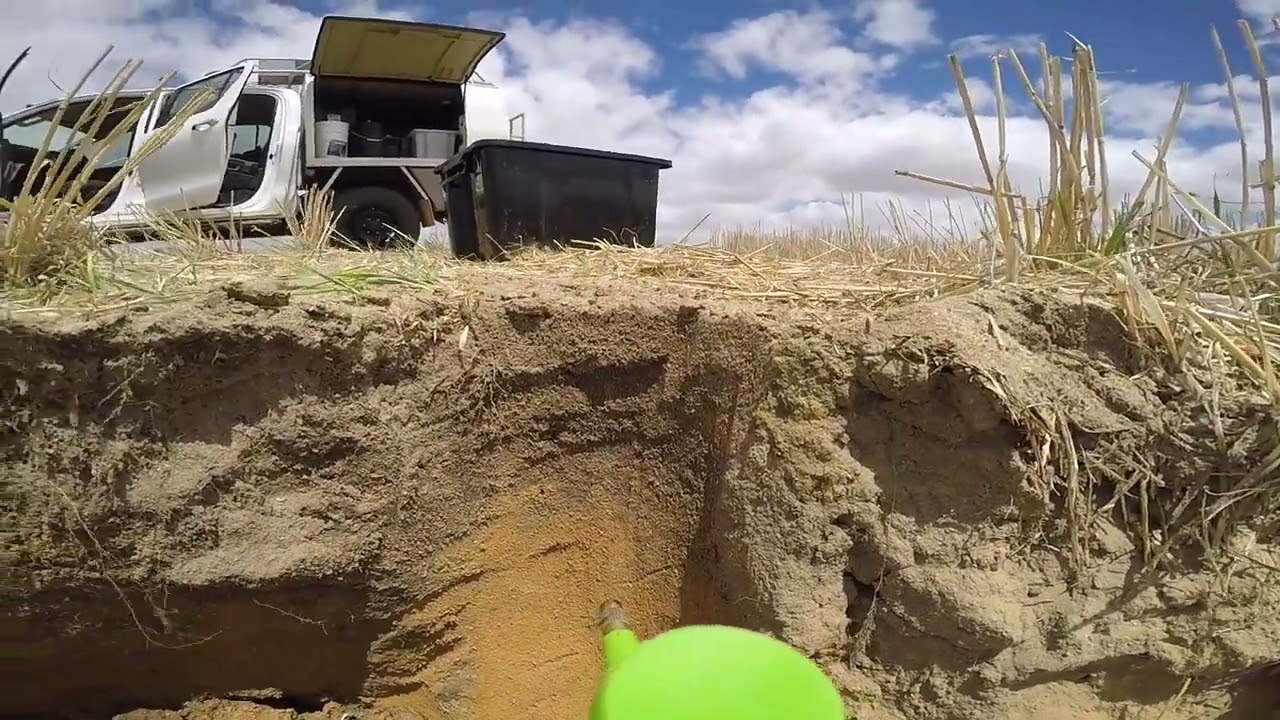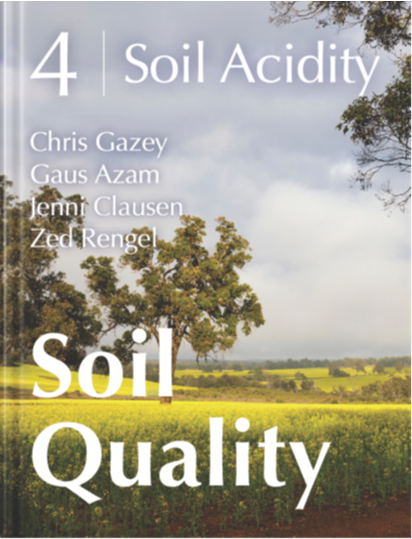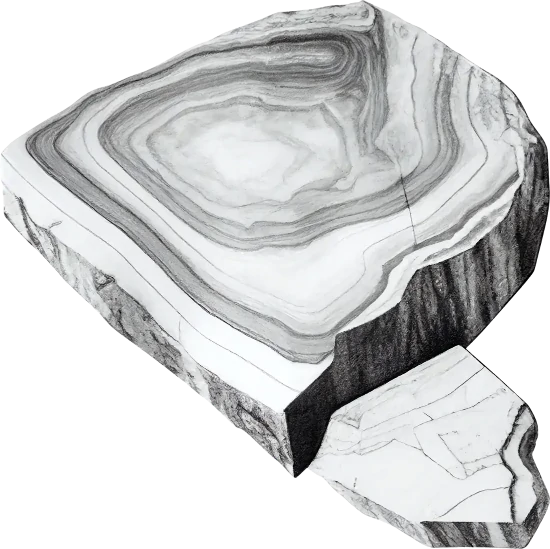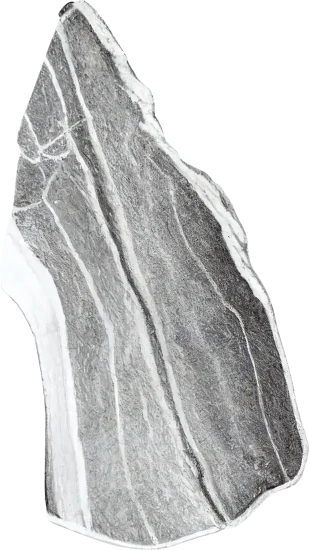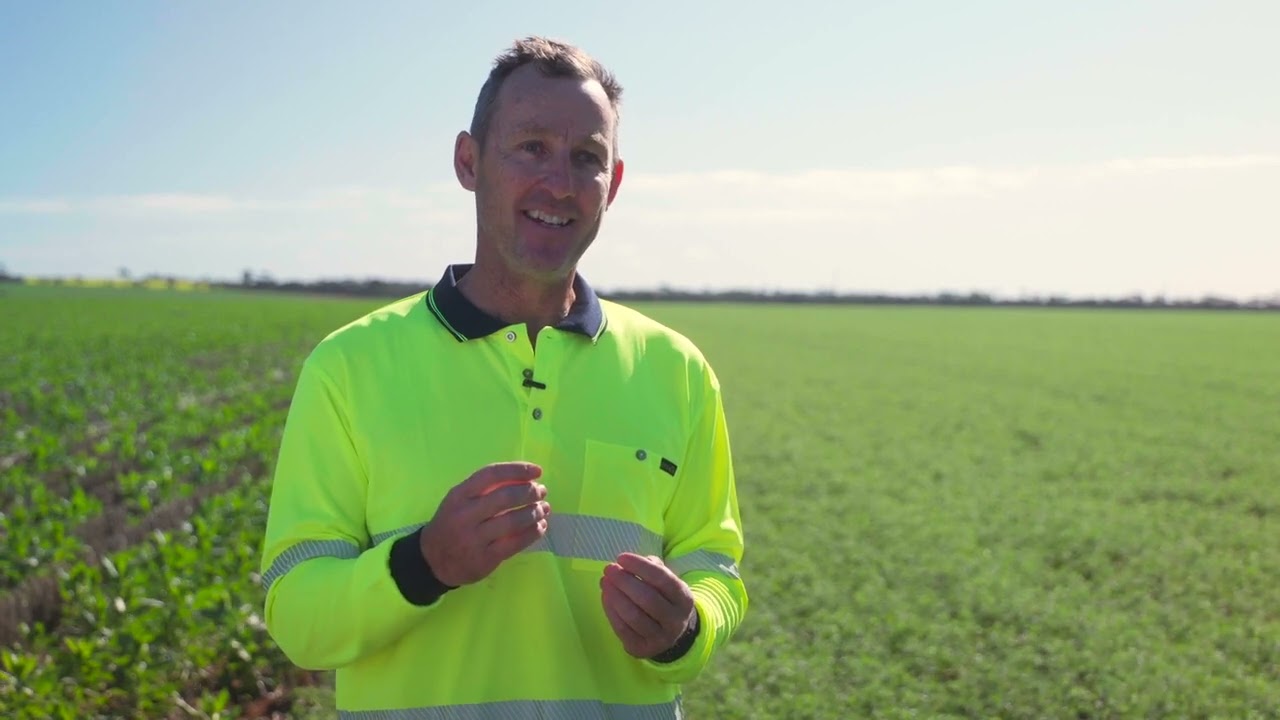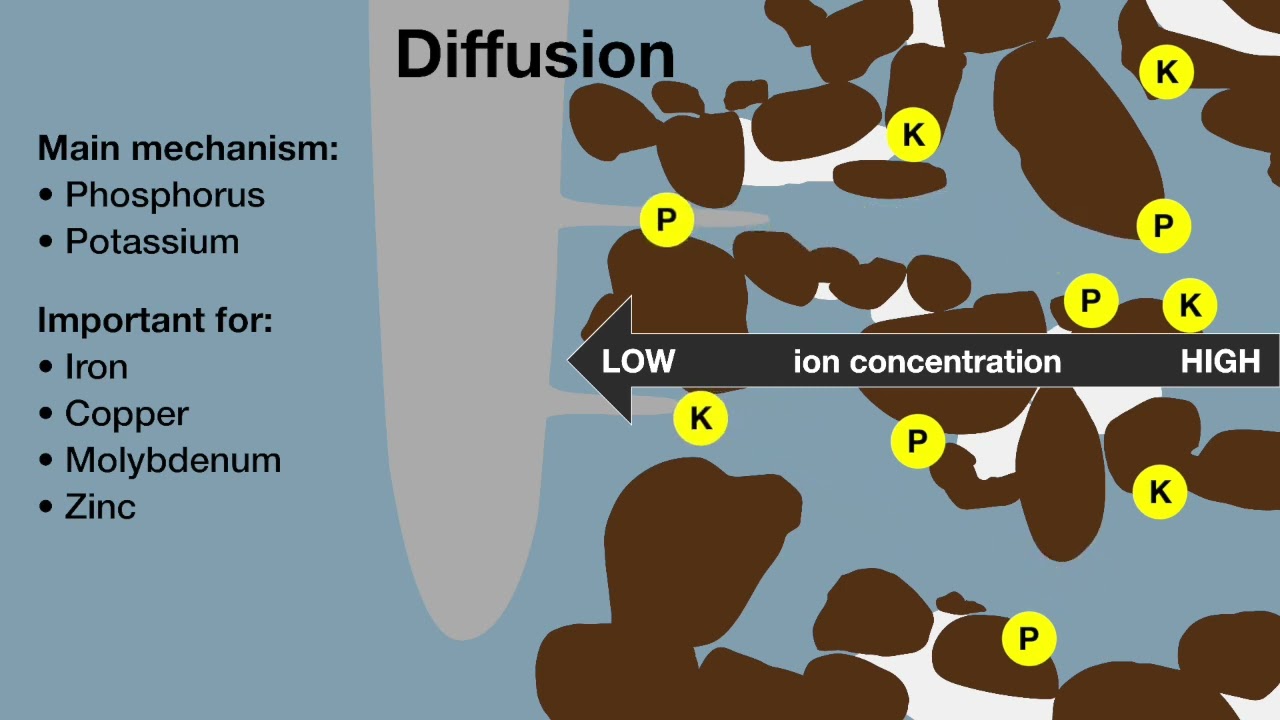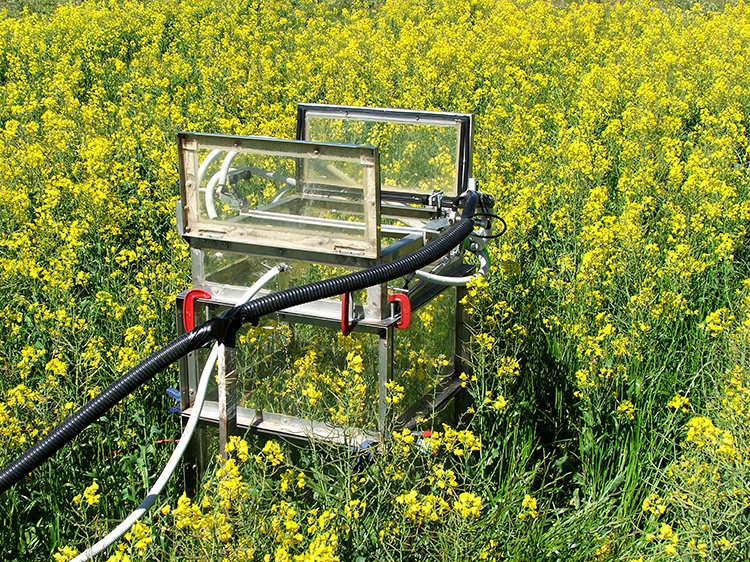Introduction to soil acidity
Acidification of agricultural soil is a global problem and is a significant threat to crop yields in areas of South America, Southeast Asia and Sub-Saharan Africa as well as Australia. In Australia, soil acidity affects approximately 50 million hectares (50%) of Australia’s agricultural land and about 23 million hectares of subsoil layers, mostly in Western Australia and New South Wales.
Soil acidity is an economic and natural resource threat throughout the south-western agricultural region of Western Australia. It is estimated that more than 14 million hectares of soil (78% of agricultural land) are acidic or at risk of becoming acidic to the point of restricting production.
The cost of soil acidity in the south-western agricultural region is difficult to determine, as it is often only one of the factors constraining production. Estimates range from $500 million, about 9% of the annual coarse grains crop (estimated in 2009), to $1.6 billion (estimated in 2015).
- Soil pH effects generally limit plant growth below pH 5.5 (measured in CaCl2), though this can vary between different plant and crop species.
- Soil acidification is a natural process caused primarily by the removal of cations and organic matter, and by nitrate leaching. This process can be accelerated in agricultural production systems, for example by the application of acidifying fertilisers and greater removal of cations in hay.
- Low soil pH can result in high concentrations of aluminium in the soil solution.
- Liming is usually required to neutralise acidity associated with agricultural production, although it can also be managed through changed farming practices.
- Lime can be used to treat surface acidity, usually with rapid results, but subsoil acidity is much harder and more expensive to correct.
Important concepts to understand in managing soil acidity are the pH scale, the soil pH buffering capacity, and the relationship between low soil pH and aluminium.
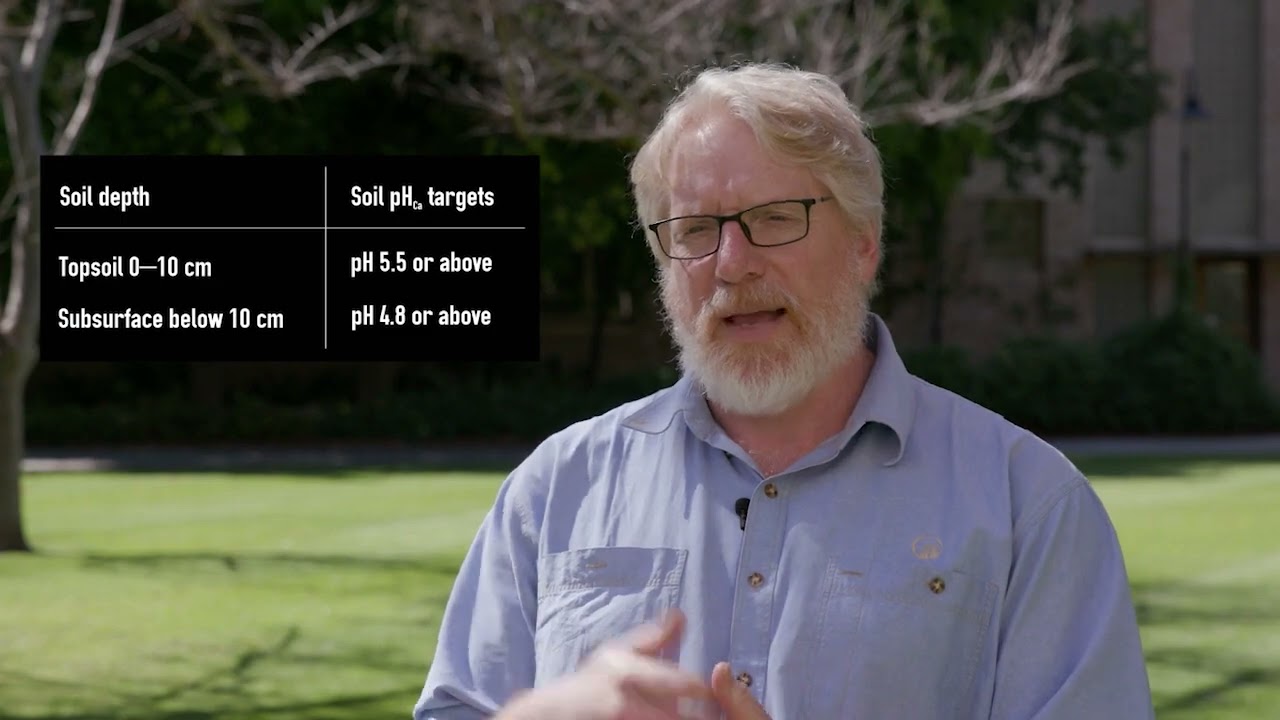
Soil acidity: the essentials
Soil acidity is one of the biggest constraints to plant production for farming in Western Australia and many other parts of the world. From Soil Quality: 2 Integrated Soil Management (Pluske et al. 2018). Video talent: Chris Gazey, DPIRD; video production: Lomax Media.
Impact of soil acidity on soil function and plant health
Aluminium toxicity
Aluminium is present in soil in a variety of forms and can be part of, or bound to, the soil constituents, particularly clay particles and organic matter. Some of these complexes are biologically active and can cause root damage, whilst others are not. When soil pH drops, some forms of aluminium become soluble and the amount of aluminium in the soil solution increases.
Aluminium toxicity in subsurface soil is the major cause of production loss associated with acidic soil in the south-western agricultural region. Aluminium in the soil solution can be toxic at just 2 parts per million. In most south-west agricultural soil, aluminium toxicity can be avoided by keeping the subsurface pHCaCl2 above 4.8.
Indicative toxicity to plant roots of aluminium in the soil solution
| Aluminium (parts per million) | Toxicity to plants |
|---|---|
| under 2 | not toxic |
| 2-5 | toxic to sensitive plants |
| over 5 | toxic to tolerant species |
From Soil Quality: 4 Soil Acidity (Gazey et al. 2019).
Generally, there is sufficient organic matter in topsoil that aluminium can remain bound in insoluble or biologically inactive organic complexes and does not become toxic to plant roots, even though it is extractable in a laboratory analysis.
Toxic levels of aluminium in the soil solution affect root cell division and the ability of the root to elongate. The root tips are deformed and brittle and root growth and branching is reduced. Poor crop and pasture growth, crop yield reduction and smaller grain size occur as a result of inadequate water and nutrition.
The effects of aluminium toxicity are most noticeable in seasons with a dry finish. Aluminium toxicity in acidic subsurface soil can form a barrier to root growth, restricting access to subsoil water, resulting in premature haying-off and poor grain filling. Aluminium toxicity is also problematic in seasons with above-average rainfall. Slow root growth through high aluminium soil doesn’t keep pace with leaching of nutrients, which may be lost from the root zone.
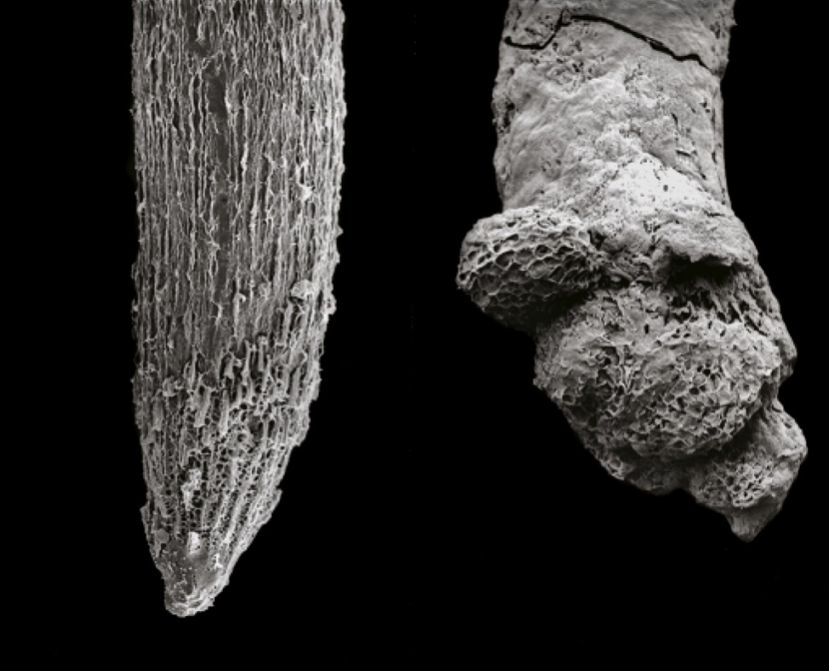
Nutrient availability
The availability of nutrients to plants is altered by soil pH. In acidic soil, the availability of the major plant nutrients nitrogen, phosphorous, potassium, sulfur, calcium, magnesium and also the trace element molybdenum is decreased and may be insufficient.
In addition to being chemically less available to plants, nutrients may also be less available due to poor root growth in acidic soil. When root growth is restricted, plants are unable to explore sufficient soil volume to compensate for the reduced chemical availability. More nutrients than should be necessary would be required to be available or applied to the surface soil for optimal plant growth. Additionally, reduced root growth into the subsoil would still limit access to water deeper in the profile.
Phosphorus levels in a large amount of Western Australian south-west agricultural soil now exceeds the amount required for optimal production, however over 50% of this soil is below pH 5.5, which can reduce uptake of phosphorus and other nutrients. Liming to raise the pH of acidic soil will increase the availability of these nutrients.
The availability of iron, manganese, copper, zinc and aluminium are increased in acidic soil. In the south-western agricultural region of Western Australia, aluminium toxicity is usually the only problem resulting from increased soil acidity. Manganese toxicity can occur in acidic soil in the eastern states of Australia, however, concentrations are rarely high enough in the soil of the south-western agricultural region to be toxic even at low soil pH.
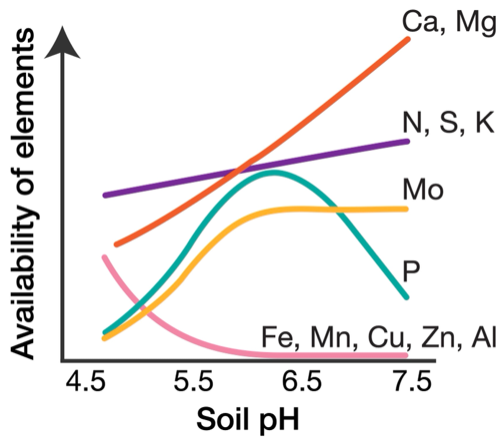
Soil microbial activity
Most microbial processes, including the breakdown of soil organic matter and cycling of nutrients, are decreased in acidic soil because growth and activity of the soil microorganisms, primarily bacteria and fungi, are often constrained by physicochemical and hydraulic properties of these soil.
Microorganisms break down organic matter and use the carbon and nutrients for their own growth. Nutrients excess to requirements are released into the soil where they are available to be taken up by plants. The rate of release (mineralisation) of nutrients by soil microorganisms into plant-available forms is slower in acidic soil, potentially limiting plant uptake.
Importantly, nodulation of sensitive legumes can fail if the soil is too acidic. Legumes are a group of plants that fix their own nitrogen from the air through a symbiotic relationship with specialised bacteria.
Under favourable conditions, nitrogen-fixing rhizobia bacteria form a symbiosis with crop and pasture legumes in root nodules.
Acidic soil can limit both root growth and rhizobia survival, but this varies for the different symbioses. Lupin and serradella species must be grown at pH below 7, however soil below pH 3.5 can injure roots and reduce the nodulation potential of these two legumes. For most other legumes in agriculture, pH below 4.5 can decrease the chances of roots contacting enough bacteria to form a nodule and inhibit the performance of nodules that do form. In acidic soil, the failure of a functioning symbiosis results in plant nitrogen deficiency.
Medic rhizobia are very sensitive to soil acidity and may fail to persist below pH 5.5. Grass-dominated pastures can result from the failure of sensitive pasture legumes to thrive in acidic soil.
Causes of soil acidity
Acidity from fertiliser
Leaching of nitrate from ammonium-based nitrogen fertilisers is responsible for most of the acidity caused by fertilisers in south-western farming systems. Nitrate-based fertilisers and phosphate fertilisers are non-acidifying. While elemental sulfur is highly acidifying, it is not widely used.
Nitrogen in agricultural systems may be fixed from the atmosphere by legumes, decomposed from soil organic matter by soil organisms, or added in various types of fertilisers, including organic amendments such as compost. In the soil, nitrogen moves through various organic and mineral forms. Different nitrogen fertilisers follow slightly different chemical pathways as they break down in the soil and contribute different amounts of hydrogen ions to the soil.
Removal of produce
Most plant material is slightly alkaline. In a natural system most plant material eventually returns to the soil and can balance some of the acidity in the soil. However, when it is removed from the paddock by harvesting or as a component of livestock or even wool, the alkalinity is exported from the system. Alkalinity should also be considered removed from the paddock when it is relocated by the concentration of dung into stock camps. A translocation of alkalinity can occur in windrows, with the soil off the windrow becoming more acidic.
Some plants are more alkaline than others and therefore some crops are more acidifying than others, in particular, legumes.
With many crops, the leaves drop off when they die and some alkalinity is returned to the soil, however with hay production, most of the tops are removed as produce and as a result, hay production is highly acidifying.
Diagnosing soil acidity
Soil sampling and analysis
While liming to counter soil acidification needs to be part of normal farming practice in most of the south-west agricultural region, accurate knowledge of your soil pH profile allows precise management decisions. Soil samples should be analysed by a laboratory accredited with the Australasian Soil and Plant Analysis Council Inc (ASPAC). It is standard practice in Western Australia for soil pH to be measured in a weak calcium chloride solution (1 part soil to 5 parts 0.01 M calcium chloride). This will allow accurate comparison with the recommended target values.
Soil pH measured in calcium chloride is designated pHCaCl2 and gives a lower value than pH measured in water (pHw). When comparing results to recommended levels, or when monitoring pH over time, it is important to adjust to a pHCaCl2 value if required. An approximation for acidic soil is: pHCaCl2 = pHw – 0.7
Target values in the south-western agricultural region of Western Australia are pHCaCl2 5.5 in the topsoil and pHCaCl2 4.8 in the subsoil.
Assessing pH after incorporation of lime
Mechanical incorporation of lime or high pH topsoil into the subsurface layers results in a highly variable soil pH profile, even when an effective distribution of lime is achieved. Monitoring pH change following deep incorporation of lime will be difficult and will require more intensive sampling than usual to account for the variable soil profile. In some cases it will be impossible to achieve meaningful measurements of pH due to uneven distribution of lime in the subsurface.
Monitoring soil pH
An appropriate sampling strategy and the ability to accurately re-locate sites for re-sampling is needed when monitoring soil pH. Monitoring soil pH every 3–4 years allows time for any lime applied to change soil pH and the liming schedule can be refined based on new information and pH trends.
Managing soil acidity
Interpreting soil test results
Use test results to determine whether the liming strategy needs to be maintenance or recovery. Results of soil pH tests can be interpreted based on the minimum targets for acidic soil of pHCaCl2 5.5 in the topsoil and 4.8 in the subsurface.
| Topsoil pH | Subsoil pH | Strategy |
|---|---|---|
| < 5.5 | < 4.8 |
Recovery liming The subsurface will continue to acidify until the topsoil pH is recovered above 5.5 and some alkalinity moves down the profile. Recovering and maintaining the topsoil pH above 5.5 as quickly as possible should allow alkalinity to move down to treat the subsurface. If the subsurface pH is below 4.5, incorporation of lime may be the best option for a faster recovery. |
| < 5.5 | > 4.8 |
Recovery liming It is important to apply lime that will recover the topsoil pH to above 5.5, otherwise not enough alkalinity will move down the profile to treat ongoing acidification in the subsurface soil, which otherwise will acidify over time. |
| > 5.5 | < 4.8 |
Recovery liming Once the subsurface soil has acidified, more lime and time are needed for recovery. In addition to maintaining topsoil pH above 5.5, sufficient alkalinity needs to move down the profile to recover the subsurface pH to 4.8 as well as countering the ongoing subsurface acidification. Incorporation of lime will speed up subsurface recovery and may be necessary where pH is below 4.5 because surface applications are unlikely to produce the required change in an acceptable timeframe. |
| > 5.5 | > 4.8 |
Maintenance liming As long as sufficient lime is applied to counter ongoing acidification and keep the topsoil pH above 5.5, sufficient alkalinity should move down the profile and maintain subsurface pH above 4.8. In farming systems with very low soil disturbance, lime can become stratified in the surface and at some point strategic tillage may be required to incorporate lime into the subsurface. |
From Soil Quality: 4 Soil Acidity (Gazey et al. 2019).
Maintenance liming
Knowing how farming system inputs and exports contribute to soil acidification will help to calculate the amount of lime required to counter ongoing soil acidification due to agriculture; this is known as maintenance liming.
Alkalinity exported in farm products needs to be replaced to counter the acidifying effect of removal. Rates of lime need to account for the different alkalinity of agricultural products and quantity removed.
The amount of lime required to counter the acidifying effects of fertilisers depends on the fertiliser used and how much is leached away from the root zone.
Typically, a broadacre farming system operating a winter crop–pasture rotation in Western Australia has an acidification rate equivalent to 25–345 kilograms per hectare per year of pure calcium carbonate. Required liming rates can only be estimated and monitoring of the soil pH profile every 3–4 years is recommended so the liming program can be refined.
Recovery liming
Estimating the amount of lime required to recover acidic soil to recommended pH is complicated. Enough lime needs to be applied to treat the acidic soil as well as ongoing acidification. Soil, climate, productivity and farming practices as well as lime quality affect the amount of lime needed to be applied. Expert advice is likely to be valuable when developing a liming program.
Monitoring the topsoil and subsurface soil every three to four years is important when liming to recover acidic subsurface soil. This will allow adjustment of the liming schedule as the soil pH increases or if it does not respond as expected. It is essential to maintain the topsoil pHCaCl2 above 5.5 for alkalinity to move down to treat acidity in the subsurface soil.
Application of gypsum in addition to lime may reduce the toxic effect of aluminium in some situations, however the long-term implications of this practice are still under investigation.
Major factors affecting recovery liming
The factors below affect the outcomes of a liming strategy to overcome soil acidity as a constraint and the maintenance of a suitable soil pH long-term.
-
Soil pH profile
Sufficient lime needs to be applied to treat acidity throughout the soil profile. If high rates of lime are needed, two to three applications over a few years is appropriate.
-
Soil type
Soil with a greater proportion of clay requires higher rates of lime.
-
Climate
Higher rainfall usually results in faster pH change from liming. Rainfall and temperature also influence productivity, which needs to be considered to account for ongoing acidification.
-
Productivity
The more productive the paddock, the higher the rate of ongoing acidification. Enough lime needs to be added to counter this in addition to the amount required to ameliorate the already acidic soil. Future increases in productivity as the soil pH improves need to be considered. Acidity from the different crop and pastures likely to be grown in the future must also be taken into account when developing a recovery liming program.
-
Farming practice
Tillage is likely to reduce the time before change in soil pH is observed. If lime is being incorporated into the subsurface soil, a greater rate of lime will be required to account for the greater volume of soil being treated all at once.
-
Lime quality
Adjustment of rates to account for the neutralising value of the lime being used is vital to achieve the desired pH change.
Acidic soil needs to be recovered to appropriate pH as quickly as possible to minimise production losses. Agricultural lime with a high proportion of small particle sizes will recover acidic soil quicker than coarser lime and should be used where possible.
Lime rate guides
Examples of the rates of lime required to bring soil acidity to the target soil pH are shown below. These general guidelines will need to be adapted to individual circumstances. Liming decision tools that take into consideration the multiple factors involved in liming effectively such as soil type, starting pH, soil depth, fertiliser use, crop rotations, lime quality can be used as a guide more specific to your situation. Expert advice should be sought for individual recommendations.
Soil type and pH change from 1 t/ha lime
This table is an indication of the pH change expected from 1 t/ha of pure calcium carbonate on different soil types with a starting pH of 4.5. Sandy soils have a lower buffering capacity which means they acidify faster but also means they require less lime to improve pH than a soil with higher clay content. These figures are a guide only and the neutralising value of agricultural lime needs to be taken into account when determining rates of lime required to produce the desired pH change.
| Soil type | pH change |
|---|---|
| sand | 0.5-0.7 |
| loam | 0.3-0.5 |
| clay | 0.2-0.3 |
From Soil Quality: 4 Soil Acidity (Gazey et al. 2019).
Lime required to achieve target pH in top 30 cm of soil profile
This table is an indicative lime guide for a sandy soil using very high quality lime (neutralising value above 90%). It estimates the amount of lime required over a five-year period for a sandy soil to achieve and maintain pHCaCl2 above 5.5 in the topsoil and 4.8 in the subsurface.
| Soil depth (cm) | pHCaCl2 | Lime amount over five years |
|---|---|---|
| 0-10 | <5 | 2 t/ha |
| <5.5 | 1 t/ha | |
| plus | ||
| 10-20 | <4.5 | 2 t/ha |
| <4.8 | 1 t/ha | |
| plus | ||
| 20-30 | <4.5 | 1 t/ha |
| <4.8 | measure pH in 3 years | |
From Soil Quality: 4 Soil Acidity (Gazey et al. 2019).
Further reading
App iLime
iLime is a useful app developed by the Department of Primary Industries and Regional Development to compare liming strategies for different situations. The app estimates the impact of lime applications on soil pH, yield and profitability of a paddock or area of soil over 20 years.
Available on iOS and Android.
Page Agricultural lime
This Soil Quality Knowledge Base page provides an overview on lime quality.
Liming effectively
The old recommendation of 1 tonne per hectare of lime every 10 years is now insufficient in most of the south-western agricultural region. Overall production has increased on most farms due to improved farming practice and crop and pasture varieties and so acidification of the soil has also increased.
Guessing how much lime to apply from only topsoil samples or applying the same rate over a paddock can lead to inadequate lime application. To ensure enough lime is applied, rates need to be based on soil pH test results from the topsoil and subsurface soil layers. This has the added benefit that the lime rates can be adjusted for priority management areas within paddocks. Applying the same rate over a paddock usually results in some areas receiving excess lime and others too little.
Applying too little lime does not treat subsurface acidity; yield will continue to be lost as subsurface pH continues to decline and inhibit root growth.
The best use of lime is achieved when you know how much to apply and where to apply it. Identifying priority areas allows liming to be targeted to achieve the best economic return.
Where it is not practical to lime all paddocks that need it, you need to prioritise but always apply the recommended rate of lime that will treat acidity in the surface and subsurface. If your best performing paddocks are at risk of acidifying, give them the highest priority. Next, identify the soil that is likely to give the greatest benefit from liming. For example, soil where an acidic layer restricts root growth into good soil below; this may not be the most acidic soil.
Scheduling lime applications prior to planned soil disturbance such as ripping or ploughing will add value to both operations. In an acidic profile, liming (and preferably fully ameliorating topsoil pH) should be considered an essential part of the tillage operation.
It is sometimes difficult to fit liming into an already busy schedule. Most liming is carried out in autumn after summer soil testing results have been analysed. While there is some benefit of incorporation during sowing or working-in by stock of lime applied previously, if time is a constraint liming at other times of the year should be considered.
Spring liming is a good option for pasture and allows the workload to be spread. Soil microbes responsible for the breakdown of soil organic matter and mineralisation of nitrogen are inhibited by acidic soil. Liming in spring allows benefit from the warm, moist conditions, which favour microbial activity. Spring liming of pastures allows time for the lime to start neutralising soil acidity before a cropping rotation, particularly if there is summer rainfall.
Controlled traffic farming systems may provide an option to lime paddocks in crop.
Increased recognition of the extent and severity of subsurface acidity in the south-western agricultural region has led to the trialling and adoption of several techniques designed to increase the incorporation of lime to depth in order to put it in close proximity to the acidic subsurface soil. In soil with pH below 4.5 down to 50 centimetres, deep mixing techniques may be the only realistic option for recovering soil pH. It is important to recognise that all tillage practices have an inherent risk of exposing the soil surface to wind erosion. They introduce another cost and techniques need to be matched to soil type and soil conditions.

Integrated management
Throughout the south-western agricultural region, soil is commonly both acidic and compacted and often water repellent as well. These constraints can often be treated in complementary operations. The full value of liming acidic soil can only be realised when other constraints to growth are also removed.
Knowing what constraints to production are present across the farm will allow prioritisation of paddocks for treatment and appropriate timing of operations to improve the value of treatments.
Any kind of soil disturbance is an opportunity for managing soil acidity. If you are planning tillage operations, and you know your soil pH profile, including management of soil acidity might be as simple as applying a top dressing of lime beforehand.
Soil testing in 10 cm increments to 30 cm and, in deep sands, a few down to 50 cm, will give you a good indication of how much lime to apply prior to tillage.
Integrating soil acidity management
| Soil pH profile | Integrating management of soil acidity with tillage operations |
|---|---|
| Acidic topsoil, good subsoil | This scenario is common on shallow sandy duplex soils. Liming before shallow of significant soil mixing for other constraints will provide a quick-fix and ensure that soil acidity is removed as a constraint to production. Even in the absence of other constraints, ameliorating this kind of pH profile is worthwhile. |
| Good topsoil, acidic subsoil | This scenario is common on deeper sandy soils where some lime has been applied to the surface. The acidic subsoil usually occurs in a band above soil with a good pH - if this is the case, there is good potential to remove acidity as a constraint to production. Slow movement of alkalinity down the profile means that soil mixing to incorporate lime will be required for a timely fix. Acidic subsoil commonly occurs in conjunction with other soil constraints and significant benefits can be achieved by addressing multiple constraints at the same time. Even with good topsoil pH, in most situations it would be necessary to apply more lime to the surface prior to soil mixing if acidic subsoil is brought to the surface. |
| Good topsoil, good subsoil | This scenario is common where adequate amounts of lime have been applied over time and there is no need for incorporation of lime. |
| Acidic topsoil, acidic subsoil | This scenario is common on sandplain soils that have had little lime and continuous cropping. Managing this situation requires good information on how severe and how deep the acidity extends into the subsoil. If there is a subsoil with good pH below the acidic soil, incorporating lime in conjunction with managing other constraints is a good option. It will be necessary to heavily lime the topsoil, preferably a season or two before soil mixing operations. Alternatively, if the pH is acidic deep in the profile (for example Wodjil soils of the eastern wheatbelt) careful consideration is needed of the cost of lime application in addition of the tillage costs. The value of investing in tillage to fix compaction or water repellence while soil acidity remains a constraint to production also needs to be weighed up. Although renovating such soil requires significant investment in both lime and operations for incorporation, good results have been achieved. In the interim, tolerant crop and pasture species should be considered. |
From Soil Quality: 2 Integrated Soil Management (Pluske et al. 2018).
Comparison of liming techniques
| Technique | Benefits | Drawbacks | Recommendation |
|---|---|---|---|
|
Surface application of lime The main aim when applying lime to the surface should be an even coverage of the ground. Depending on spreader design and wind conditions, the spreading width can be up to 12 m with good coverage of fine particles less than 0.5 mm. Spreading too wide results in uneven treatment of soil acidity. Larger particles will spread up to 15 m but the effective distribution is poor and will result in variable change in pH. Subsequent normal farming operations in a minimum tillage system will incorporate lime up to 5 cm deep. |
- In time, sufficient surface application of lime can usually treat subsurface acidity. - The cost is relatively low. |
- Some agricultural soil is now acidic so deep (50 cm or more) that recovery of soil pH by surface liming will take too long and incorporation of lime will be required. | Surface application is recommended where the soil pH profile is suitable for maintenance applications. |
|
Surface apply and then deep rip Deep ripping is primarily conducted to ameliorate subsurface compaction. A limited amount of surface-applied lime can be incorporated into the subsurface down to 15-20 cm as tines are pulled through the soil. |
- Some benefits of lime incorporation will be gained over surface application of lime alone. - The cost is relatively low (assuming ripping would be done anyway). |
- Deep ripping is not as effective as mixing lime into the subsurface as other incorporation methods. | Ripping is not recommended as a primary technique to incorporate lime, however, if you are going to rip to treat compaction and you have acidic soil, then apply lime before ripping. |
|
Topsoil slotting Inclusion plates (also called opening plates or openers) on the back of deep ripping tines allow topsoil to fall into the slot created, resulting in seams of topsoil to the working depth of the equipment (usually 20-30 cm). For best results, the topsoil pHCaCl2 needs to be above 6 and, in addition, have been recently limed. |
- The 'slots' of topsoil can provide pathways for roots to grow deeper into the soil profile. - Subsurface compaction and acidity can be managed in one operation. - Soil disturbance is less than for soil mixing/inversion techniques. - The cost is cheaper than spading or mouldboard ploughing. |
- It may take some years to treat topsoil acidity prior to slotting. - Topsoil slotting is most effective when the topsoil is dry. - Soil disturbance is greater than for conventional ripping. - Working costs are higher than for conventional ripping. |
Where topsoil pH is good, slotting can provide pathways for root growth through acidic soil with less soil disturbance than ploughing or spading. |
|
Direct injection This technique places lime at depth during deep-ripping, using modified machinery. There is currently no commercial equipment available. One method has been to transport lime in an air stream using a modified multi spreader equipped with a fan and venturi system to deliver lime behind the deep ripping tines. Another method has used a conveyer belt to drop lime by gravity immediately behind deep ripping tines. |
- Subsurface acidity can be quickly treated. - When the distribution of lime is correct, yield responses of 20-30% in wheat are common. -Avoids significant disturbance of the topsoil. |
- It is difficult to achieve adequate distribution of the lime. Poor distribution can result is the lime being placed below an untreated acidic layer, which continues to restrict root growth. - Costs can be high due to machinery modification and slow operation. |
Deep placement in difficult to 'get right' and before it is attempted, consideration should be given to whether it is likely to be profitable. |
|
Incorporation of lime by shallow offset disc ploughing Lime is spread on the surface prior to shallow ploughing which will then provide some mixing. The depth of mixing will depend on the size of the discs and soil conditions, for example, compacted layers or gravel can limit the depth of working. |
- The advantage over surface application alone is the mixing and faster neutralisation, leading to more opportunity for alkalinity to then move deeper into the profile. - There is less disturbance to soil structure than deeper ploughing or spading. Old root channels and biopores may remain as pathways for roots into the subsoil. - The cost is 70-80% cheaper than for rotary spading. |
- The incorporation depth is only 10-12 cm. - Shallow incorporation does not provide some of the other benefits afforded by other more-aggressive tillage practices, such as removal of compaction layers and incorporation of lime into the subsurface soil. |
Shallow incorporation of lime is useful where rapid amelioration is needed in the topsoil. |
|
Incorporation of lime using deeper offset disc and one-way ploughing Ploughing can be used to incorporate lime spread on the surface or topsoil that has previously been limed at reasonably high rates and is likely to still contain undissolved lime. Ploughing then provides some mixing and assists in the amelioration of subsurface acidity. The depth achieved will depend on the size of the discs and soil conditions, for example, compacted layers or gravel can limit the depth of working. Incorporation of lime or limed soil is usually best achieved by modifications to the ploughs, such as removing every second disc or using modified discs to achieve greater throw of soil. |
- These techniques give similar soil mixing to incomplete inversion from a mouldboard plough, usually with less overall cost. - Compaction can be treated, depending on the depth and severity. - Water repellence can be treated/decreased. |
- High rates of lime are required because lime is mixed through a large volume of acidic soil. - Costs can be high if deep ripping to treat compaction is required prior to ploughing. - Soil structure, old root channels, and other biopores will be damaged. - Ploughing buries stubble and increases wind erosion risk, requiring cover to be grown as soon as possible. |
These are good approaches to mix topsoil with an adequate liming history (which is likely to still contain a high proportion of undissolved lime) or surface-applied lime into acidic subsurface soil. |
|
Mouldboard ploughing Mouldboard ploughing is usually done to fully invert the soil profile for effective seed burial. For effective lime incorporation, keeping the mouldboard plough working a little shallower, using a higher speed and setting it up to get incomplete inversion can result in the formation of an angled limed topsoil layer that goes from the surface to subsurface and provides a pathway for root growth into the subsoil. |
- Lime can be incorporated to a depth of 30-35 cm. - When set up for incomplete inversion, mouldboard ploughing can be effective in providing some mixing and distribution of the lime through the profile and an continuous ameliorated pH pathway from the surface soil into the subsoil for root growth. - Mouldboard ploughing can treat compaction to the working depth. - Water repellence can be treated/decreased. - Weed seeds can be buried. |
- If the setup is for full inversion of the topsoil, limed topsoil can be buried in a layer at depth, above which is a layer of acidic soil brought up from the subsurface. More lime then needs to be applied to the surface. - If the setup is for incomplete inversion, burial of weed seeds and water repellent topsoil is compromised. - High rates of lime are required because lime is mixed through a large volume of acidic soil. - Capital and working costs are high. - Soil structure, old root channels, and other biopores will be damaged. - Stubble will be buried and wind erosion risk increased, requiring cover to be grown as soon as possible. |
Mouldboard ploughing provides an opportunity to incorporate lime or limed topsoil, however, the best distribution requires incomplete topsoil inversion and the drawbacks need to be considered. |
|
Rotary spading The spades bury some topsoil while also lifting seams of subsoil to the surface. For best results, lime should be applied to the surface a few years prior to spading, giving time for the pH in the topsoil, or about the top 10 cm, to increase above 6; if necessary two applications of lime should be applied. Then the spading mixes 10 cm of this limed topsoil, which is likely to contain undissolved lime, through 30 cm, achieving a better distribution of lime than mixing less than 1 mm of newly-applied lime into the 30 cm. |
- Lime can be incorporated to a depth of 25-30 cm. - A better distribution of lime through the soil profile is achieved than with mouldboard ploughing. - The mixing action improves the contact of lime with the acidic soil resulting in rapid and effective neutralisation of the acidity. - Rotary spading can be an effective treatment for water repellence. In some soils, rotary spading can treat compaction to the working depth (but for maximum effect, may need to be deep ripped first). |
- High rates of lime are required because lime is mixed through a large volume of acidic soil. - Rotary spading is unsuitable for some soil types with rocks and roots. - Compaction is commonly deeper than the rotary spader working depth and would need to be dealt with in a separate operation, thereby increasing costs. - Soil structure, old root channels, and other biopores will be damaged. - Spading buries stubble and increases wind erosion risk. Cover will need to be grown as soon as possible. |
Surface-applied lime or topsoil with good pH can be incorporated into acidic subsurface soil. On acidic soil, spreading lime prior to spading to ameliorate water repellent soil will be beneficial. |
|
Addition of lime while seeding Application at low rates of lime during seeding is not a commercially supported practice and requires modification of the seeding set-up. Low rates of a few hundred kg/ha would have to be applied every 1-3 years to maintain good soil pH. Monitoring of soil pH about every 3 years would be required to ensure ongoing acidification is being neutralised. |
- This may be a convenient way to fit maintenance liming into the farming schedule. - Low cost (no spreading cost but a capital cost for delivery mechanism). |
- Incorporating small amounts of lime at seeding is not effective in recovering soil pH if the soil has already become acidic because insufficient lime is applied. | This may be convenient for maintenance liming. There is a risk that low rates of lime are insufficient to treat ongoing subsurface acidification. |
|
Addition of liquid lime while seeding There are a range of 'liquid limes' on the market. These limes are either fine calcium carbonate in suspension or are alkaline liquids. They are delivered through liquid application systems into the seeding furrow at seeding. |
- Low cost per application. |
- There is a risk that recommended rates are insufficient to maintain good soil pH. - The cost per unit of neutralising value applied is very high. |
The use and cost-effectiveness of this method should be assessed according to the neutralising potential of the liquid applied to ensure that sufficienct is applied to counter ongoing acidification. |
From Soil Quality: 4 Soil Acidity (Gazey et al. 2019).
Complementary strategies
The rate of soil acidification due to agriculture can be reduced but not eliminated—liming will always be needed to prevent the soil from becoming too acidic.
Acidification rate
The inefficient use of nitrogen fertiliser is a major contributor to soil acidification in Western Australia. Inputs of nitrogen fertiliser can be managed to reduce nitrogen leaching and this is especially important in high rainfall areas. Carefully calculating nitrogen fertiliser requirements and using split applications can reduce acidification.
Non-acidifying nitrogen fertilisers may be an option, but assess the cost-effectiveness compared to the cost of other nitrogen fertilisers plus lime to counter the acidification they cause.
Removal of produce also contributes to soil acidification and some products are more acidifying than others because more alkalinity is exported from the paddock. Usually, it is desirable to maintain maximum crop and pasture choice and apply lime to counter soil acidification. However, if soil is already highly acidic, the choice of less acidifying options, in conjunction with a recovery liming program, may help.
Tolerant crops and pastures
The impact of soil acidity can be reduced by choosing crop and pasture species or varieties that are tolerant of low soil pH. Strains of symbiotic nitrogen-fixing bacteria also vary in tolerance to acidic soil. Legume crops and pastures inoculated with the most appropriate strain will ensure the most effective symbiosis in your current soil conditions.
These strategies need to be used in conjunction with a liming program to recover soil pH to minimum target values (above pHCaCl2 5.5 in the topsoil and 4.8 in the subsurface). Without treatment, the soil will continue to acidify, the cost of amelioration will increase and all the while productivity and rotation options will decrease.

Page references and acknowledgements
Material on this page adapted from:
- Pluske W, Boggs G and Leopold M (2018). Soil Quality: 2 Integrated Soil Management. SoilsWest, Perth, Western Australia. [Access]
- Gazey C, Azam G, Clausen J and Rengel Z (2019). Soil Quality: 4 Soil Acidity. SoilsWest, Perth, Western Australia. [Access]
Last updated July 2024.

